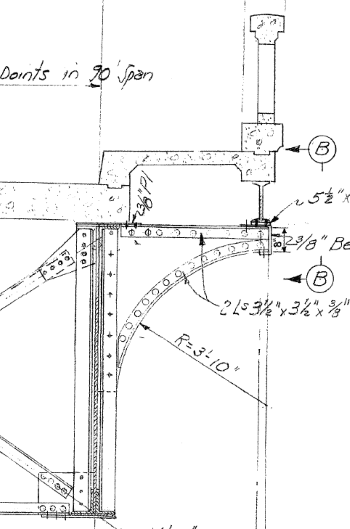TempStructures
Structural
I am attempting to compare excavator loading on a bridge with rated loads. My typical approach is to compare load effects of design load with proposed equipment. In this case, contractor is trying to maximize equipment size and I'm looking to bridge rating to sharpen my pencil. The bridge is being demolished, it will never be opened to public use again.
The design live load is H-15, built in 1930's. Load Factor method is noted. See attached photo for rating report excerpt.
Is the following the correct way to compare moments using the Rating Factor:
H-15 Moment x 1.32 Rating Factor >= Excavator Moment
I am using Lever Rule to determine distribution factors to girders and all comparisons are on a girder basis.
Thanks for any feedback.
The design live load is H-15, built in 1930's. Load Factor method is noted. See attached photo for rating report excerpt.
Is the following the correct way to compare moments using the Rating Factor:
H-15 Moment x 1.32 Rating Factor >= Excavator Moment
I am using Lever Rule to determine distribution factors to girders and all comparisons are on a girder basis.
Thanks for any feedback.


![[idea] [idea] [idea]](/data/assets/smilies/idea.gif)